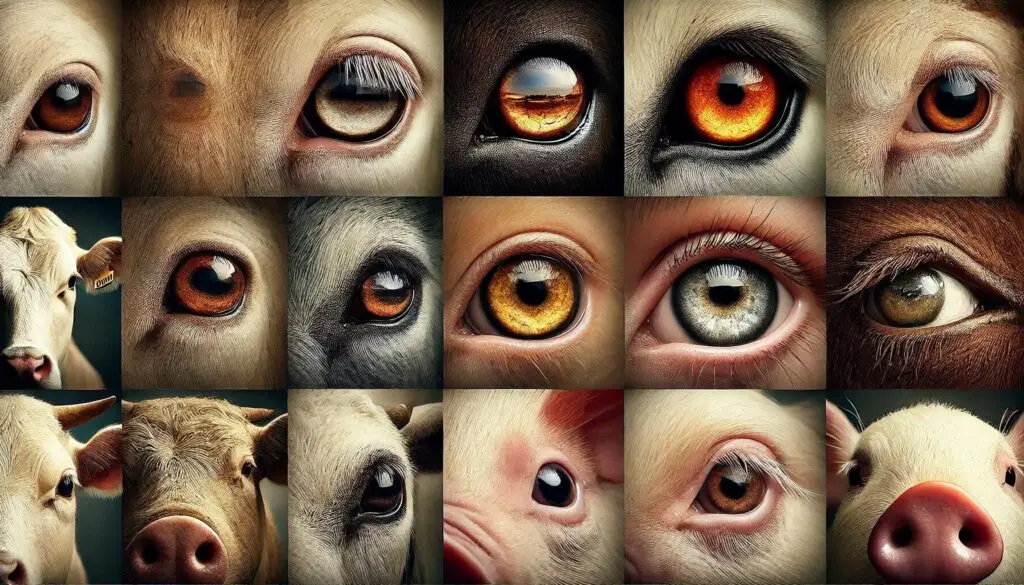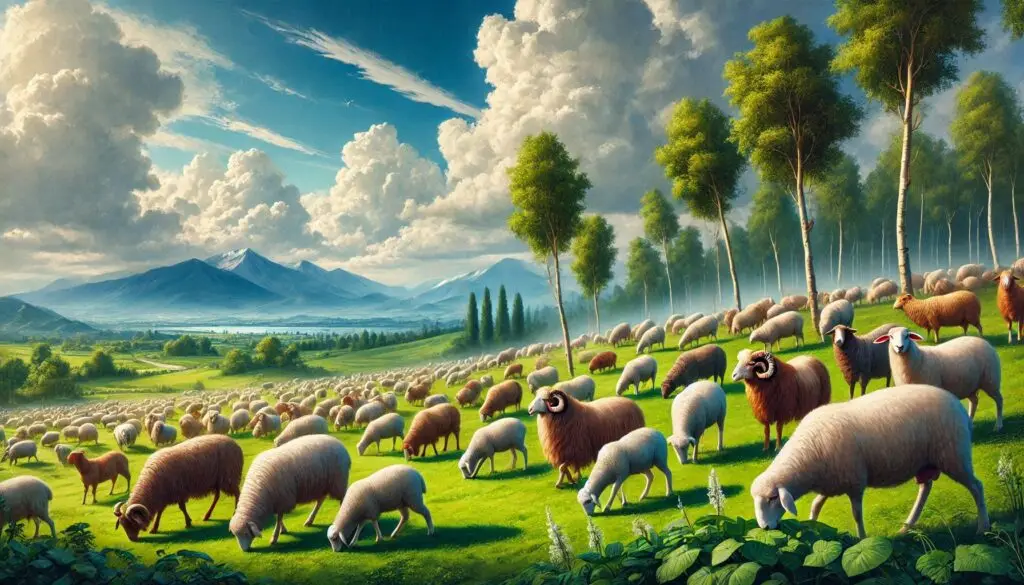Eyes in Farm Animals

Introduction
Farm animals play a vital role in agriculture. Understanding their biology enhances our ability to care for them effectively. One fascinating aspect is their eyes. The structure and function of eyes in farm animals are uniquely adapted to their environment. This article explores these adaptations, common eye issues, and how to care for your livestock’s eyes.
Unique Adaptations of Farm Animal Eyes
Horizontal Pupils
Many farm animals, such as cows, sheep, and goats, have horizontal pupils. This feature is crucial for their survival.
Enhanced Field of Vision
Horizontal pupils allow these animals to see a wide area around them. This adaptation is essential for spotting predators. According to a study published in the Journal of Experimental Biology, this wide field of vision helps prey animals remain vigilant against threats (source).
Light Management
The shape of horizontal pupils also helps manage light intake. It allows more light to enter from ground level while reducing glare from above. This capability improves their ability to detect movement on the ground.
Cyclovergence: A Unique Ability
Farm animals can maintain horizontal pupil orientation even when they lower their heads to graze. This ability is called cyclovergence. It ensures that their visual field remains optimal while feeding.
Importance of Cyclovergence
Cyclovergence allows animals to keep an eye out for predators while they eat. This adaptation is vital for survival in the wild. It enables them to quickly react if they sense danger.
Common Eye Issues in Farm Animals
Despite these adaptations, farm animals can suffer from various eye problems. Understanding these issues helps in providing better care.
Red or Watery Eyes
Red or watery eyes are common in farm animals. Dust, pollen, or irritants can cause this condition. If you notice this symptom, check the environment for allergens.
Discharge or Crusting
Discharge from the eyes can indicate infections. If you see crusting around the eyes, it may be time to consult a veterinarian. Prompt treatment can prevent further complications (source).
Irritation from Environmental Factors
Farm animals often face environmental challenges that can irritate their eyes. Wind, dust, and bright sunlight can all contribute to discomfort. Providing shelter and shade can help alleviate these issues.
Preventive Eye Care for Farm Animals
Maintaining eye health is crucial for the overall well-being of farm animals. Here are some practical tips for keeping their eyes healthy.
Regular Inspections
Conduct regular eye checks on your livestock. Look for signs of irritation or infection at least once a week. Early detection is key to effective treatment.
What to Look For
- Redness or swelling
- Excessive tearing
- Discharge or crusting
- Squinting or rubbing of the eyes
Use Veterinary Products
If you notice any issues, consider using veterinary-approved eye drops or ointments designed specifically for livestock. These products can help soothe irritation and prevent infections (source).
Immediate Treatment
If you observe any signs of discomfort, act quickly. Consult a veterinarian if symptoms persist or worsen. Prompt treatment can prevent more serious health problems.
The Role of Nutrition in Eye Health
Nutrition plays a significant role in maintaining eye health in farm animals. A balanced diet supports overall well-being, including vision.
Essential Nutrients for Eye Health
Certain nutrients are particularly beneficial for eye health:
- Vitamin A: Crucial for maintaining good vision and preventing night blindness.
- Omega-3 Fatty Acids: Support retinal health and reduce inflammation.
- Antioxidants: Help protect against oxidative stress that can damage eye tissues.
Feeding Practices
Ensure your livestock receives a balanced diet rich in these nutrients. Consider consulting with a veterinarian or animal nutritionist for tailored feeding plans that promote eye health.
Behavioral Aspects Related to Vision
Understanding how vision affects behavior can improve animal welfare on farms.
Grazing Behavior
Farm animals often graze with their heads down, which limits their field of vision temporarily. However, thanks to cyclovergence, they remain aware of their surroundings while eating.
Social Interactions
Vision also plays a role in social interactions among farm animals. They rely on sight to recognize each other and establish social hierarchies within herds or flocks.
Conclusion
The eyes of farm animals are remarkable adaptations that serve crucial functions for survival and well-being. By understanding these features and providing proper care, farmers can enhance the quality of life for their livestock.
Regular inspections, proper nutrition, and prompt treatment of any issues are essential practices that ensure healthy eyes in farm animals.
More from Veterinary Anatomy:
Corpus Albicum






Responses